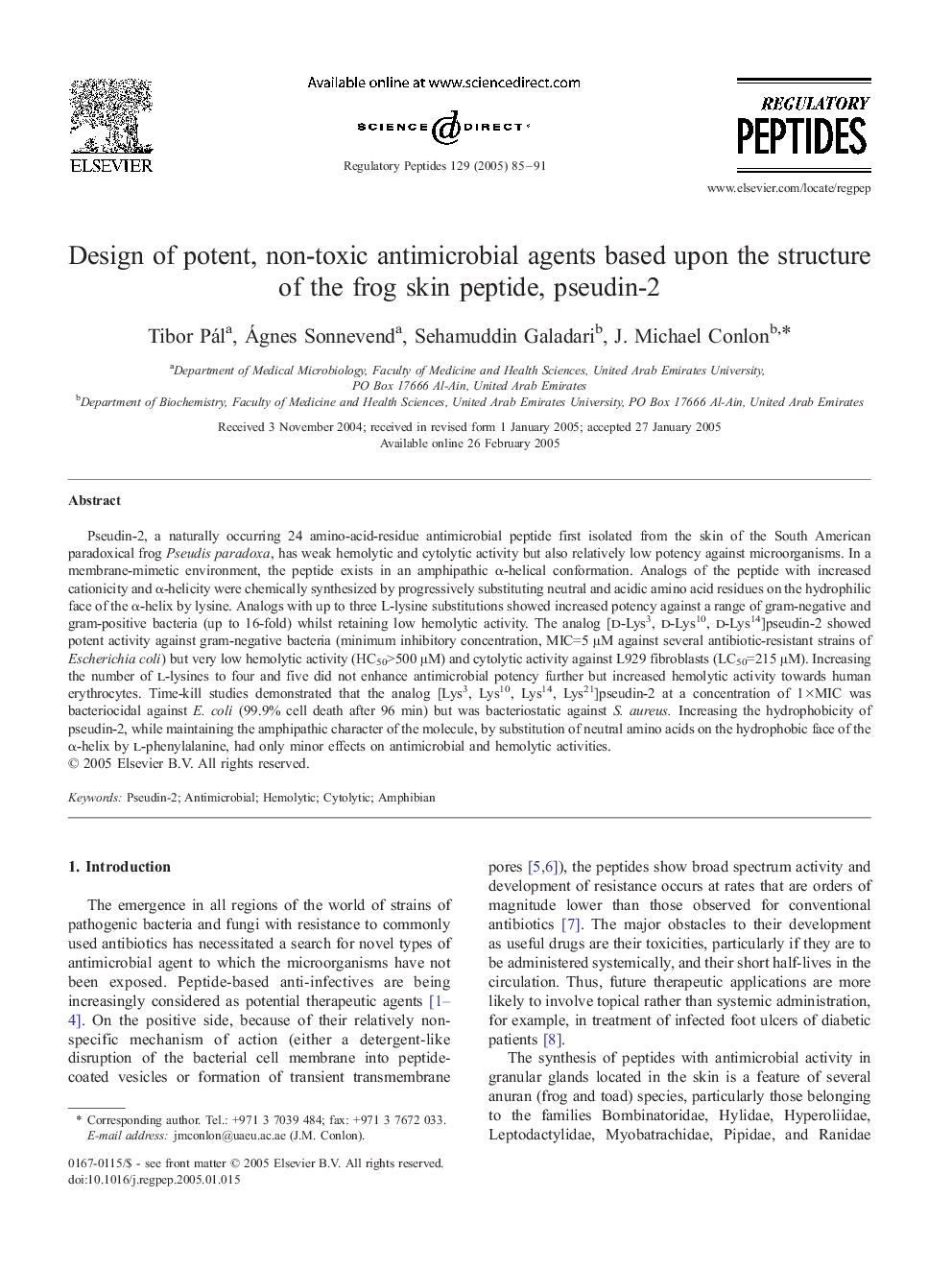| Article ID | Journal | Published Year | Pages | File Type |
|---|---|---|---|---|
| 9894410 | Regulatory Peptides | 2005 | 7 Pages |
Abstract
Pseudin-2, a naturally occurring 24 amino-acid-residue antimicrobial peptide first isolated from the skin of the South American paradoxical frog Pseudis paradoxa, has weak hemolytic and cytolytic activity but also relatively low potency against microorganisms. In a membrane-mimetic environment, the peptide exists in an amphipathic α-helical conformation. Analogs of the peptide with increased cationicity and α-helicity were chemically synthesized by progressively substituting neutral and acidic amino acid residues on the hydrophilic face of the α-helix by lysine. Analogs with up to three L-lysine substitutions showed increased potency against a range of gram-negative and gram-positive bacteria (up to 16-fold) whilst retaining low hemolytic activity. The analog [d-Lys3, d-Lys10, d-Lys14]pseudin-2 showed potent activity against gram-negative bacteria (minimum inhibitory concentration, MIC=5 μM against several antibiotic-resistant strains of Escherichia coli) but very low hemolytic activity (HC50>500 μM) and cytolytic activity against L929 fibroblasts (LC50=215 μM). Increasing the number of l-lysines to four and five did not enhance antimicrobial potency further but increased hemolytic activity towards human erythrocytes. Time-kill studies demonstrated that the analog [Lys3, Lys10, Lys14, Lys21]pseudin-2 at a concentration of 1ÃMIC was bacteriocidal against E. coli (99.9% cell death after 96 min) but was bacteriostatic against S. aureus. Increasing the hydrophobicity of pseudin-2, while maintaining the amphipathic character of the molecule, by substitution of neutral amino acids on the hydrophobic face of the α-helix by l-phenylalanine, had only minor effects on antimicrobial and hemolytic activities.
Related Topics
Life Sciences
Biochemistry, Genetics and Molecular Biology
Biochemistry
Authors
Tibor Pál, Ágnes Sonnevend, Sehamuddin Galadari, J. Michael Conlon,
